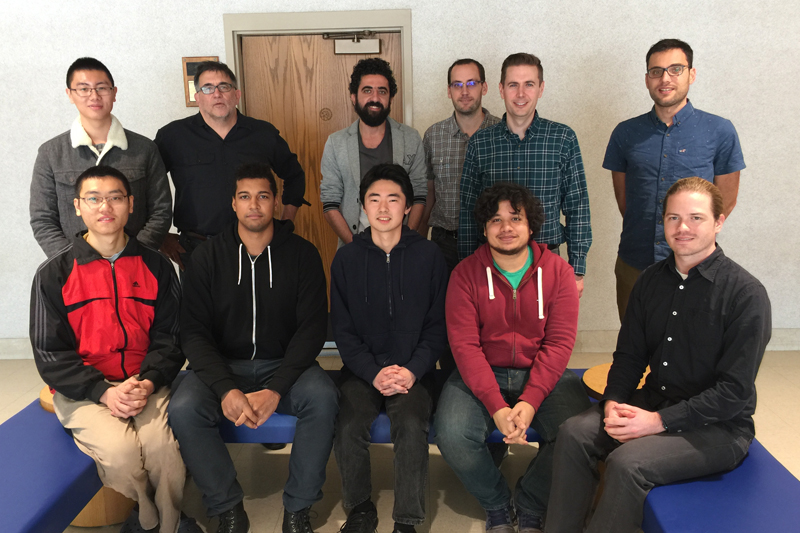ECE team wins $750K to advance in DARPA SC2

Purdue teamed up with Texas A&M to form the BAM! Wireless team, which is one of ten teams to receive funding that supports their participation in the second phase of SC2. The goal of the competition is to find novel ways for making the most efficient use of the limited amount of radio spectrum available. The work of the BAM! Wireless team built upon the success from the first DARPA Spectrum Challenge. That team, which reached the finals of the event, was led by James Krogmeier and David Love, both professors of electrical and computer engineering at Purdue.
The first preliminary SC2 event was held in December 2017 at The Johns Hopkins University Applied Physics Laboratory (APL) in Laurel, MD. Teams were charged with using artificial intelligence to develop ways for radio devices to manage use of the radio spectrum autonomously.
“In peak hours, the spectrum gets congested and there is very little technology that addresses that,” says Aly El Gamal, assistant professor of electrical and computer engineering. “The whole point of this competition is to come up with AI techniques and collaboration protocols so that mobile devices that don’t even subscribe to the same provider can talk to each other and collaborate to solve the congestion problem.”
To test these systems, SC2 developed the Colosseum, which can run real-world scenarios to figure out which spectrum management algorithms work best. Thirty teams had access to the Colosseum for a year prior to the preliminary event. They competed against each other monthly in training scrimmages and went through a qualification round to narrow the field to the 19 that traveled to Johns Hopkins last month for the in-person competition. At that event, the Colosseum ran hundreds of scenarios to determine which spectrum management algorithms worked best.

“You couldn’t tweak your systems as the competition progressed,” says Borja Peleato-Inarrea, assistant professor of electrical and computer engineering. “The systems had to be sent a week in advance and everything had to happen automatically during the competition.”
Each team’s performance was evaluated on its design’s ability to operate with the systems of other teams, avoid interference, and efficiently use available radio spectrum.
El Gamal says overall they were happy with the way their system performed.
“There were certain settings where we did really well compared to other teams,” he says. “There were certain settings where we didn’t do as well as we’d hoped. But I think we were the most consistent team because we had very few bugs. Our code was surprisingly robust.”
While every team is welcome to continue to the next round of the competition, the top 10 each received $750,000 to continue to develop their designs. In addition to teams from universities, the top ten included independent engineers and software developers along with defense companies BAE Systems and Northrop Grumman.
Peleato-Inarrea says this is a valuable, one-of-a-kind experience for the graduate students involved.
“This gives them practical skills they wouldn’t always be getting in research work or in the classroom, or even in an internship with a company” he says. “This is a real application, where you have to build something from scratch, and you’re going to face challenges that aren’t traditional academic problems. The skills gained will be valuable whether they ultimately go into academia or industry.”
The next SC2 event is scheduled for December 2018. It will increase the number of co-existing wireless networks from three to five, and the total number of radios in one scenario from 15 to 50. Over the next 12 months, teams will be able to test their designs and scrimmage against each other in the Colosseum. The teams who receive prize money at the second preliminary event will have the opportunity to move on to the final competition in 2019, where the top three teams will win $2 million, $1 million, and $750,000, respectively.
